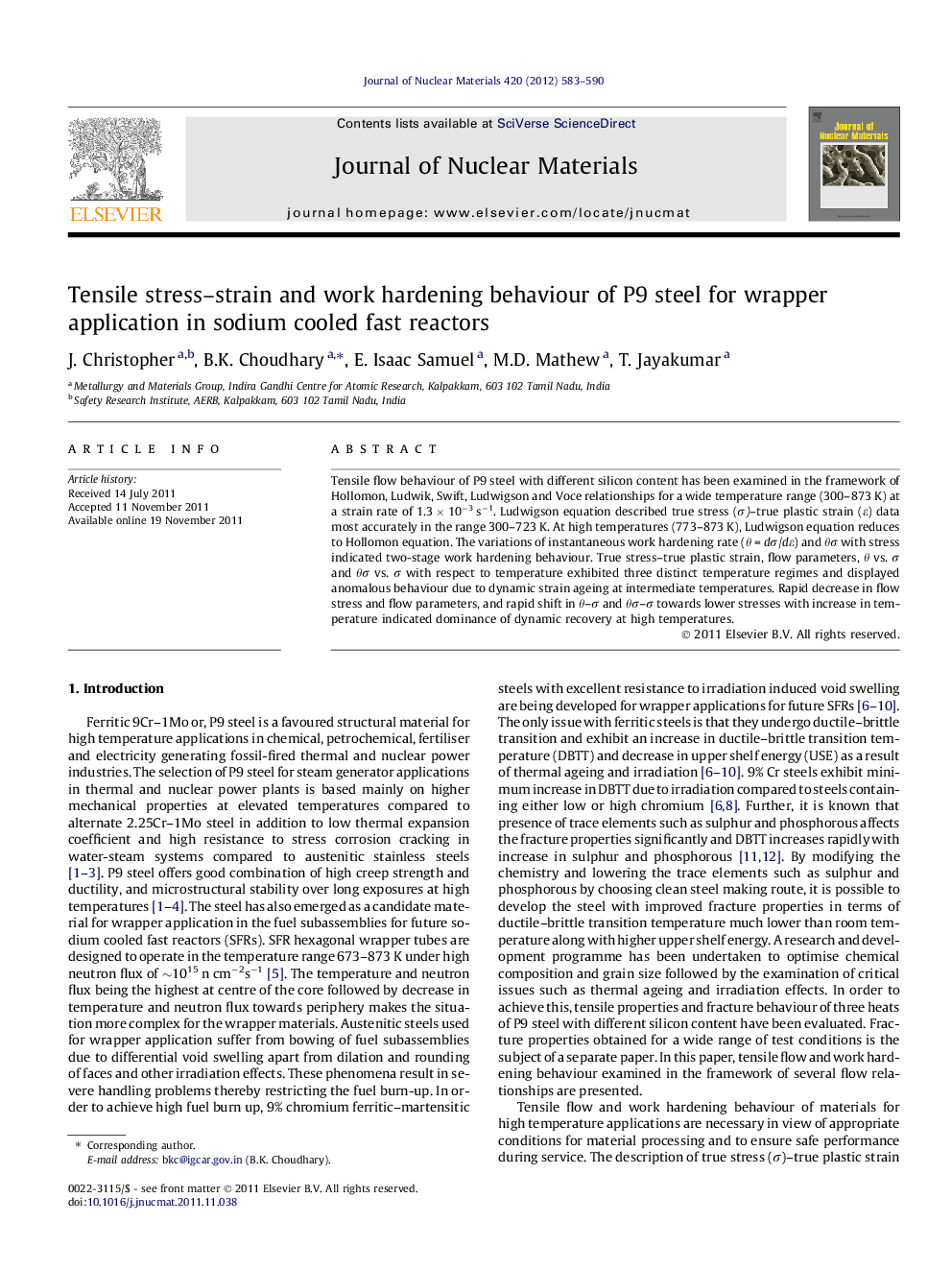| Article ID | Journal | Published Year | Pages | File Type |
|---|---|---|---|---|
| 1566508 | Journal of Nuclear Materials | 2012 | 8 Pages |
Tensile flow behaviour of P9 steel with different silicon content has been examined in the framework of Hollomon, Ludwik, Swift, Ludwigson and Voce relationships for a wide temperature range (300–873 K) at a strain rate of 1.3 × 10−3 s−1. Ludwigson equation described true stress (σ)–true plastic strain (ε) data most accurately in the range 300–723 K. At high temperatures (773–873 K), Ludwigson equation reduces to Hollomon equation. The variations of instantaneous work hardening rate (θ = dσ/dε) and θσ with stress indicated two-stage work hardening behaviour. True stress–true plastic strain, flow parameters, θ vs. σ and θσ vs. σ with respect to temperature exhibited three distinct temperature regimes and displayed anomalous behaviour due to dynamic strain ageing at intermediate temperatures. Rapid decrease in flow stress and flow parameters, and rapid shift in θ–σ and θσ–σ towards lower stresses with increase in temperature indicated dominance of dynamic recovery at high temperatures.
► σ–ε behaviour has been adequately described by Ludwigson and Hollomon equations. ► Instantaneous work hardening rate (θ) exhibited two-stage behaviour. ► σ–ε, flow parameters, θ and θσ vs.σ exhibited three distinct temperature regimes. ► Influence of dynamic strain ageing at intermediate temperatures has been identified. ► Dominance of dynamic recovery at high temperatures was demonstrated.
